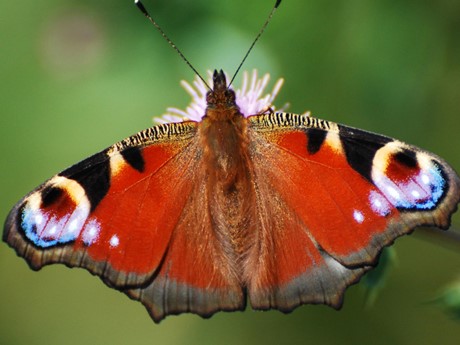Which butterflies come out in early spring?
Fritha West, 11/03/2022
Butterfly sightings become increasingly common as the weather starts to warm up. Sheltered gardens on sunny days are the ideal place for butterflies to stretch their wings after lying dormant all winter. But which ones are first on the scene?

Peacock (Photo: John Bridges/WTML)

Small tortoiseshell (Photo: John Bridges/WTML)

Brimstone (Photo: Paul Sterry/WTML)
The species you are most likely to see in early spring include:
Peacock, from mid-February
Small tortoiseshell, from the end of February
Brimstone, from the start of March
Comma, from the start of March
Red admiral, from the start of March
Small white, from the end of March

Comma (Photo: John Bridges/WTML)

Red admiral (Photo: John Bridges/WTML)

Small white (Photo: WTPL/WTPL)
From April onwards, you will start to see more and more butterflies. The later spring species we record include:
Green-veined white, from the start of April
Holly blue, from early April
Orange tip, from early April
Speckled wood, from the start of April
Butterfly life cycle
It’s important to remember that each species puts its own ‘spin’ on the butterfly life cycle. Whilst most species spend winter as a caterpillar, some spend it as an egg or a chrysalis, and only 5 out of our 59 native butterflies spend it in adult form. The speckled wood is the only one that likes to mix it up – hibernating as a chrysalis or as a caterpillar.

Speckled wood butterfly which emerges in April (Photo: John Bridges/WTML)
Do butterflies hibernate in winter?
Insects can’t technically hibernate, but they can go into a state of dormancy. This is because they rely on their environment to keep them warm and give them enough energy to move around. When it’s cold, they become inactive and enter what is known as diapause.
Diapause is a “period of suspended development”. Lots of animals do this when conditions aren’t quite right for them. It means they can wait out the hard bit, and emerge again when things are easier.
Butterflies that may overwinter as adults in the UK include brimstone, red admiral, peacock, comma, and small tortoiseshell. This means they can wake up bright and early to make the most of sunny spring days. On Nature’s Calendar there have even been reports of butterflies as early as Boxing Day!
Do UK butterflies migrate?
Most red admiral butterflies are migrants to the UK. They avoid the cold UK winter by heading to North Africa or continental Europe, returning to us in spring.

A red admiral butterfly - often overwintering in North Africa (Photo: John Bridges/WTML)
Record your butterfly sightings here
For Nature’s Calendar data collection, we are careful to only record butterflies seen outside. This is because some species will take shelter in people’s houses – and may start to wake up when the central heating comes on!
Why do we monitor butterflies for Nature’s Calendar?
Butterflies are cold blooded organisms, meaning they rely on their environment to heat them up. Because of this, they are particularly sensitive to changes in local environmental conditions. Using butterflies as indicators of environmental and ecological change is a trick that lots of scientists use all over the world. And because butterflies are easy to spot and nice to look at, we can ask the public to keep an eye on them, too!

